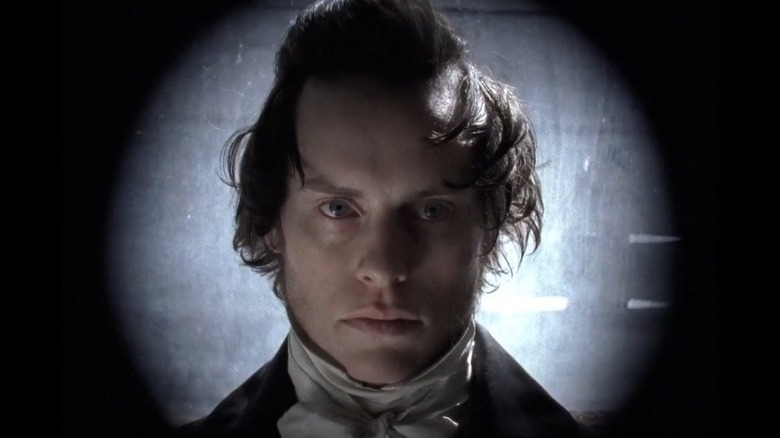Adapting a classic short story for the silver screen – is it a literary tightrope walk or a cinematic cakewalk? The answer, invariably, lies somewhere in the labyrinthine space between textual fidelity and artistic interpretation. Translating the concentrated power of a short story into a full-fledged film presents a unique set of challenges, demanding a delicate balance of reverence and reinvention.
The Essence of Brevity: Expanding a Concise Narrative
Short stories, by their very nature, are exercises in narrative economy. They distill a complete narrative arc into a compact form, often relying on implication and suggestion rather than explicit exposition. A primary hurdle in adaptation is expanding this concise narrative without diluting its essence. Filmmakers must wrestle with the task of adding layers of plot, character development, and subtext to fill the cinematic canvas, potentially losing the sharp focus that made the original story so compelling.
Consider, for instance, the intricate world-building required to adapt a science fiction short story. The film must visually and conceptually flesh out the futuristic society, the technological advancements, and the socio-political context hinted at in the source material. This necessitates a degree of extrapolation, a carefully considered expansion that enhances, rather than overshadows, the core themes.
Visualizing the Intangible: Bridging the Gap Between Page and Screen
The power of a short story often resides in its internal landscape – the thoughts, feelings, and motivations of its characters. Capturing this interiority on film presents a significant hurdle. While literature can directly access a character’s inner monologue, cinema relies on external cues: facial expressions, body language, dialogue, and visual symbolism. Translating the intangible into a tangible, visual language requires a deft directorial hand and nuanced performances.
Consider the adaptation of a psychological thriller. The film must find ways to visually represent the character’s descent into madness, the creeping paranoia, and the blurring of reality. This might involve subjective camera angles, distorted visuals, and sound design that reflects the character’s fractured mental state. The challenge lies in conveying the psychological depth of the story without resorting to heavy-handed exposition.
The Specter of Authorial Intent: Navigating Fidelity and Interpretation
Adaptation is inherently an act of interpretation. While some filmmakers strive for unwavering fidelity to the source material, others embrace a more liberal approach, using the story as a springboard for their own creative vision. The question of how closely to adhere to the author’s original intent is a constant source of debate and contention. Some purists argue that any deviation from the source material is a betrayal, while others maintain that adaptation is a transformative process that allows the story to reach new audiences and resonate in new ways.
Imagine adapting a story with a particularly ambiguous ending. Does the filmmaker attempt to provide a definitive resolution, or do they remain faithful to the original’s ambiguity, leaving the audience to draw their own conclusions? The choice reflects a fundamental approach to adaptation – whether to prioritize faithfulness or artistic license.
Maintaining Narrative Momentum: Sustaining Tension in a Longer Format
Short stories are masters of pacing, often building tension rapidly and delivering a satisfying resolution in a concentrated burst. Maintaining this narrative momentum over the course of a feature film is a significant challenge. Filmmakers must find ways to sustain the audience’s interest, introducing new conflicts, developing secondary characters, and creating a sense of escalating stakes. The risk, however, is that these additions dilute the original story’s impact, losing the sense of urgency and inevitability that made it so compelling.
Consider the adaptation of a suspenseful short story. The film might introduce a subplot involving a detective investigating the central mystery, adding layers of intrigue and suspense. However, this subplot must be carefully integrated into the main narrative, avoiding digressions that detract from the core conflict.
The Allure of the Unseen: Balancing Revelation and Mystery
One of the strengths of the short story format is its ability to evoke atmosphere and create a sense of unease through suggestion and implication. Leaving certain aspects of the story unexplained can heighten the reader’s imagination and create a lasting impression. In film adaptation, however, there is often a pressure to provide definitive answers, to fill in the gaps left deliberately open in the original story. This can be a double-edged sword. While revealing too much can diminish the story’s mystique, leaving too much unexplained can leave the audience feeling frustrated and unsatisfied.
Think about adapting a ghost story. Does the film explicitly show the ghost, or does it rely on subtle cues and atmospheric effects to create a sense of dread? The choice reflects a fundamental understanding of the genre and the power of suggestion.
The Economic Realities: Compromises and Creative Solutions
Beyond the artistic challenges, filmmakers adapting short stories often face economic constraints. Budget limitations can impact casting choices, production design, and special effects, potentially compromising the director’s vision. Finding creative solutions to overcome these limitations is a crucial part of the adaptation process. This might involve simplifying the setting, focusing on character-driven drama, or utilizing innovative filmmaking techniques to create a sense of scale and scope on a limited budget.
Consider adapting a story set in a lavish historical setting. A low-budget film might choose to focus on a smaller group of characters, limiting the number of elaborate costumes and sets required. The key is to find ways to convey the essence of the setting without breaking the bank.
Adapting a classic short story is a complex and multifaceted undertaking, a delicate dance between honoring the past and embracing the possibilities of the present. The challenges are numerous, but so are the rewards. When done well, a successful adaptation can breathe new life into a beloved story, introducing it to a wider audience and sparking new conversations about its enduring themes.
